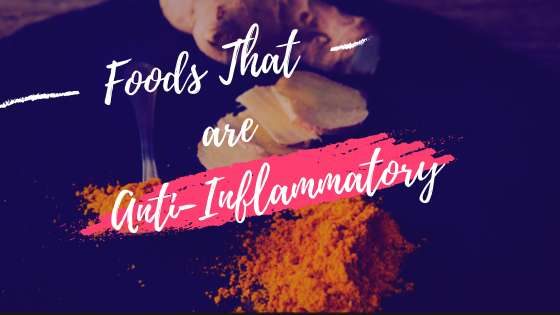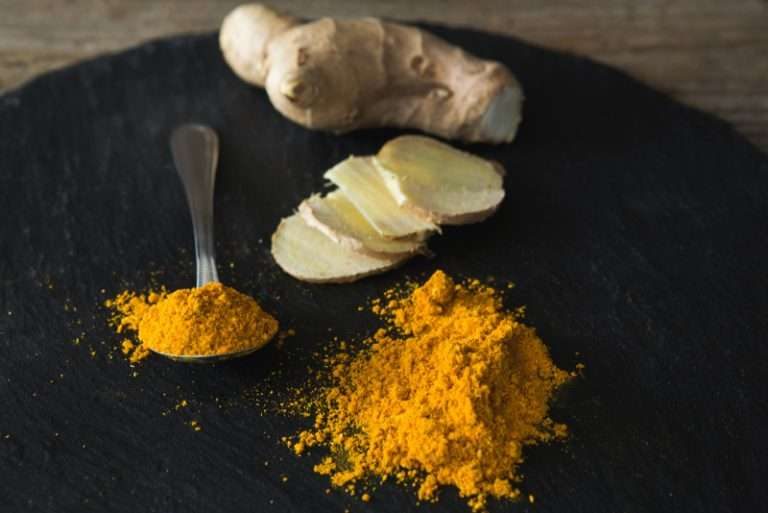Inflammation is a natural response to injury and infection. It’s also a major contributor to chronic disease. Anti-inflammatory foods can take the edge off when you have been infected.
Chronic inflammation has been linked to depression, Alzheimer’s disease, Parkinson’s disease, multiple sclerosis, diabetes, heart disease, cancer, arthritis, asthma, allergies, obesity, and many other diseases.
But here’s the thing…inflammation is not inevitable. In fact, we can control it with food! And the foods that help us fight inflammation are anti-inflammatory foods.
In this article, we share 14 anti-inflammatory foods that will help you fight inflammation.
Table of Contents
What Are Anti-Inflammatory Foods?
There are many different anti-inflammatory foods. The best way to determine which foods are anti-inflammatory is to read labels. Many processed foods contain inflammatory ingredients, while whole foods have fewer. Inflammation is the root cause of almost every chronic disease. This includes heart disease, diabetes, cancer, arthritis, asthma, and even Alzheimer’s disease.
How Does Food Affect Our Immune System?
When we consume food, our bodies break down the food into smaller molecules called amino acids. Amino acids are used to build proteins within cells. Proteins are needed to repair damaged tissue and make new cells. However, when we eat too much protein, our bodies produce excess amounts of pro-inflammatory chemicals called cytokines. Cytokines are responsible for inflammation.

Here Are Some Foods that Fight Inflammation:
Berries
Berries contain many beneficial phytonutrients, including antioxidants, flavonoids, phenolic acids, anthocyanins, ellagitannin, and proanthocyanidins. They have been shown to reduce inflammation and oxidative damage, protect against cancer, and promote cardiovascular health. Berries are rich sources of vitamin C, fiber, folate, potassium, magnesium, copper, iron, zinc, calcium, phosphorus, selenium, thiamine, riboflavin, niacin, pantothenic acid, biotin, and choline. They also contain polyphenols, which act as powerful anti-inflammatory agents. The antioxidant properties of berries make them ideal for preventing chronic diseases such as heart disease, diabetes, obesity, and Alzheimer’s disease.
Broccoli
Broccoli has been shown to reduce inflammation in the body. Inflammation is associated with many diseases, including heart disease, diabetes, cancer, arthritis, asthma, Alzheimer’s, and autoimmune diseases. Broccoli is high in fiber and vitamin C, two anti-inflammatory nutrients. The antioxidant sulforaphane found in broccoli helps protect cells against damage due to oxidation. Sulforaphane also increases detoxification enzymes in the liver, helping to remove toxins from the body. Broccoli also provides folate, potassium, magnesium, iron, calcium, zinc, copper, phosphorus, riboflavin, niacin, thiamine, pantothenic acid, biotin, and selenium.
Cabbage
Cabbage has been used for centuries as medicine. Cabbages contain many nutrients, including vitamin A, vitamin K, folate, calcium, iron, magnesium, potassium, phosphorus, protein, riboflavin, thiamine, zinc, and fiber. They have anti-inflammatory properties due to their high content of glucosinolates, which are sulfur-containing phytochemicals. Glucosinolates break down into isothiocyanates, which have powerful antioxidant effects. The best way to consume cabbage is raw. However, cooked cabbage is also beneficial because it helps reduce inflammation.
Carrots
Carrots have been used medicinally since ancient times. They contain many nutrients, including beta-carotene, vitamin A, fiber, potassium, calcium, iron, magnesium, zinc, copper, phosphorus, folate, thiamine, riboflavin, niacin, pantothenic acid, biotin, and choline. Carrot juice has even been shown to reduce inflammation in laboratory animals.
Garlic
There are two main reasons why garlic fights inflammation. First, garlic contains powerful antioxidants called polyphenols. Polyphenols have strong antioxidant effects that help fight off harmful molecules called reactive oxygen species (ROS). ROS are produced naturally by the body during normal metabolism, but they can become toxic when levels rise too high. Antioxidants neutralize ROS and help maintain proper cellular function. Second, garlic contains sulfur compounds called thiosulfinates. Thiosulfinates are responsible for the pungent smell of fresh garlic. They also contain antimicrobial properties that kill pathogens.
Ginger
Ginger is rich in vitamin C, calcium, magnesium, iron, zinc, and fiber. It also contains powerful antioxidants called polyphenols, which have been shown to protect against heart disease and cancer.
Ginger is effective in fighting inflammation. Inflammation is the response of tissues to injury or irritation. Inflammation can cause pain and discomfort.
Ginger works by blocking prostaglandins, chemicals produced by the body that trigger inflammation. Prostaglandins are involved in the production of fever, pain, and inflammation. Ginger inhibits prostaglandin synthesis, thereby helping to reduce inflammation.
Ginger also stimulates the release of serotonin, a neurotransmitter that regulates sleep, appetite, and emotions. Serotonin plays a key role in regulating the central nervous system.
Spinach
Spinach has been shown to have many benefits for overall health. It is high in fiber, vitamin K, folate, iron, magnesium, potassium, calcium, copper, zinc, and omega-3 fatty acids. The list goes on and on! This superfood is packed with nutrients that promote heart health, boost immunity, lower cholesterol levels, fight cancer, and even protect against Alzheimer’s Disease.
Spinach is a member of the cruciferous vegetable family, along with broccoli, cabbage, cauliflower, kale, collard greens, mustard greens, radishes, arugula, turnips, rutabaga, and watercress. Cruciferous vegetables contain phytonutrients called glucosinolates, which are converted into isothiocyanates after they are eaten. Glucosinolates are thought to play a role in preventing cancer because they inhibit enzymes that cause cell growth. They also appear to stimulate the immune system and increase detoxification.
Pineapple
Pineapple has been used for centuries as a remedy for various ailments. The fruit is rich in vitamin C, fiber, potassium, and bromelain. Bromelain is an enzyme found in pineapples that helps break down proteins. This makes it useful for reducing swelling and pain after injuries. Vitamin C is essential for collagen production, which keeps skin looking youthful. Fiber aids digestion and reduces cholesterol levels. Potassium helps maintain fluid balance and blood pressure. Pineapple is also high in antioxidants, which protect against cell damage.
Tomatoes
Tomatoes contain many nutrients that have been shown to lower blood pressure, improve heart function, fight cancer, boost immunity, and protect against cardiovascular diseases. They are rich sources of vitamins A, C, K, E, folate, potassium, fiber, and lycopene. Lycopene is a powerful antioxidant found in tomatoes that have been linked to reduced risk of prostate cancer, breast cancer, lung cancer, and cardiovascular disease.
Kale
The antioxidant properties of kale make it effective in fighting inflammation. Kale contains anthocyanins, flavonoids, carotenoids, polyphenols, lutein, zeaxanthin, and phytosterols. Anthocyanins are pigments found in plants that turn red, purple, and blue colors depending on their pH. Flavonoids are plant-based phenolic compounds that are responsible for giving fruits and vegetables their color. Carotenoids include lycopene, lutein, and beta-carotin. Polyphenols are plant-derived compounds that exhibit antioxidant effects. Lutein and zeaxanthin are two xanthophylls that are present in kale. Phytosterols are plant-based sterols that lower LDL cholesterol.
Leeks
leek is a member of the onion family. It has been used medicinally since ancient times. The leaves have been used to treat colds, coughs, and sore throats. They contain many nutrients, including vitamin C, potassium, calcium, iron, fiber, folate, and magnesium. Leeks are high in flavonoids, which are powerful antioxidants that protect cells against damage. They also contain quercetin, a compound that helps reduce inflammation.
Tomatoes
Tomatoes contain many nutrients that have been shown to reduce inflammation. They are high in vitamin C, potassium, folate, fiber, lycopene, and beta-carotene. The antioxidant lycopene has been found to protect against cancer, heart disease, and stroke. Lycopene is also believed to improve blood flow and circulation. Beta-carotene is converted into vitamin A, which promotes cell growth and protects cells from damage. Antioxidants neutralize harmful oxygen molecules called free radicals. Free radicals cause oxidative stress, which damages cells and contributes to aging and chronic diseases. Tomatoes are rich in phytochemicals, plant chemicals that act as antioxidants. Phytochemicals are thought to play a role in reducing inflammation.
Peppers
Peppers contain capsaicin and many nutrients, including vitamin C, potassium, magnesium, fiber, and phytochemicals. The latter are plant chemicals that protect against cancer, heart disease, and diabetes.
Consuming capsaicin, the compound responsible for the pungency of red pepper, reduced levels of inflammatory markers in the blood. Capsaicin has been shown to inhibit the production of pro-inflammatory cytokines, molecules produced by white blood cells that cause inflammation.
Turmeric
Turmeric is rich in curcuminoids, which have potent antioxidant, antibacterial, antiviral, antifungal, and anticancer properties. Turmeric is also high in fiber, iron, calcium, zinc, magnesium, phosphorus, copper, vitamin A, and vitamin C.
Turmeric helps reduce inflammation in the body. Inflammation is linked to several diseases, including heart disease, diabetes, arthritis, asthma, cancer, Alzheimer’s disease, and multiple sclerosis. Turmeric is thought to work by reducing levels of inflammatory chemicals called cytokines. Cytokines cause pain and swelling in joints and muscles.
Turmeric also inhibits the production of prostaglandins, hormones that cause inflammation. Prostaglandins play a role in promoting blood clotting and causing pain. Turmeric also increases the amount of glutathione, an antioxidant that protects cells against damage. Glutathione is essential for detoxification and neutralizing toxins in the body.
In conclusion, inflammation plays a huge role in almost every disease we face today. That means that foods like turmeric, ginger, and garlic can help keep us healthier and happier than ever before. So whether you want to fight cancer, diabetes, heart disease, arthritis, or anything else, these foods can help you achieve your goal.
The bottom line is that anti-inflammatory diets are essential for our overall health and happiness. They’re easy to incorporate into your diet, and they won’t require you to cut out entire food groups. In fact, you can actually add them to your favorite dishes without sacrificing flavor or texture. So next time you’re craving a burger, fries, or pizza, reach for a piece of fruit instead. It’ll taste delicious, it’ll boost your mood, and it’ll help you stay healthy.

